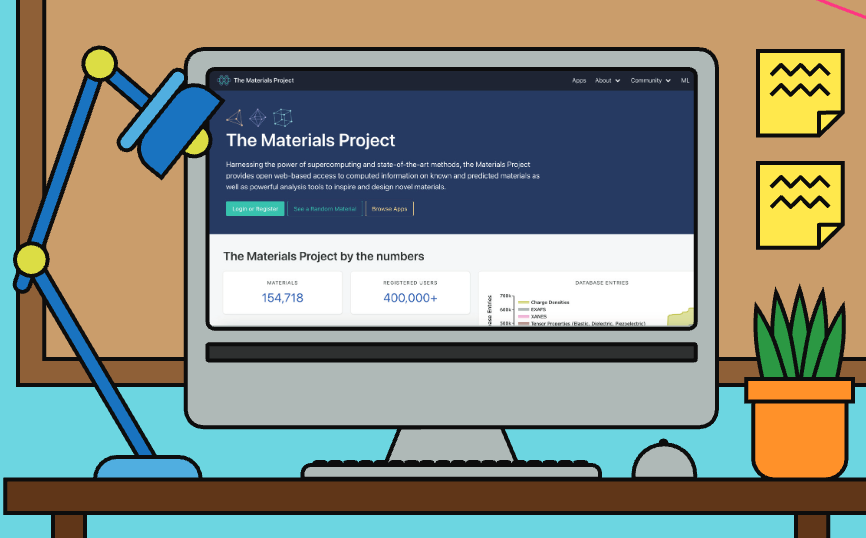Material girl in a digital world

At the onset of the Cold War, the field of materials science began to formally emerge, combining the synthetic, fundamental, and practical interests of chemistry, physics, and engineering. Motivated by the desire to discover new materials for space and military technology, researchers developed a vast array of innovative alloys, plastics, catalysts, and semiconductors. Nevertheless, many of these discoveries either required years of development or emerged serendipitously. Generally, materials discovery is limited by a scientist’s intuition and knowledge of a given material, yielding a trial-and-error development cycle that is fundamentally slow. Furthermore, all synthetic endeavors, particularly those based on lofty hypotheses, pose a serious risk of not producing anything fruitful at all—let alone an improvement on the desired properties—leading to most synthetic progress being incremental.
Recognizing this pivotal issue in materials science research, scientists at Lawrence Berkeley National Laboratory (LBL) developed the Materials Project in 2011. Led by Kristin Persson, professor of materials science and engineering at UC Berkeley and staff scientist at LBL, the Materials Project provides a variety of freely available, open-source, web-based materials analysis tools. A comprehensive database of predicted properties of materials generated from millions of simulations, the Materials Project aims to reduce the time and cost of discovering and developing new materials. Containing information on tens of thousands of inorganic materials, the database provides insights into crystal structures, thermodynamic properties, band structure calculations, and X-ray absorbance simulations, as well as phase and Pourbaix diagrams. These computations inform predictions of the stability and properties of a hypothetical material, as well as their behavior at different concentrations, pressures, or acidities. For users, the Materials Project is a one-stop shop, not only providing an extensive compilation of a variety of datasets but also enabling one to process, analyze, and visualize the data all within the web-app.
The Materials Project offers these resources by leveraging quantum mechanical model simulations and computations. While computational methods can only approximate a material’s properties, the use of two distinct quantum mechanical models allows the Materials Project to select the best algorithm for a given type of material. This is particularly important for transition metal oxides and sulfides. For designing a new material that is not already tabulated within the database, simulating its properties within the Materials Project environment involves four key steps: (1) defining the geometry or crystal structure of the material; (2) specifying the properties of interest; (3) queueing and executing the associated calculations; and (4) storing, analyzing, and visualizing the simulated data. Using this workflow, one can iteratively filter for various materials against an increasingly sophisticated list of requirements for a given application. For instance, Yan and colleagues at Pennsylvania State University employed the Materials Project to sift through more than 60,000 potential light-capturing catalytic materials. They employed a tiered filtering process with progressively stringent criteria, ultimately identifying 15 compounds of interest. Their use of the Materials Project enabled a systematic and rapid evaluation of a much broader array of materials than a materials scientist or chemist could have worked with, allowing for the design and synthesis processes to be streamlined.
The development of advanced materials has evolved significantly in the past 70 years and plays a central role in the economy and in tackling current global challenges like climate change and clean energy. Over the past two decades, advances in computation have compiled libraries of simulated data. The Materials Project utilizes these advancements by constructing a large array of open-source tools to improve the development of new materials and continues to generate new data simulations for identifying new materials. Successes the project has contributed to over the past decade, such as carbon capture, lithium-ion battery technology, and solar cells, demonstrate the power and utility of large, open-source databases and calculations.
This article is part of the Spring 2024 issue.




